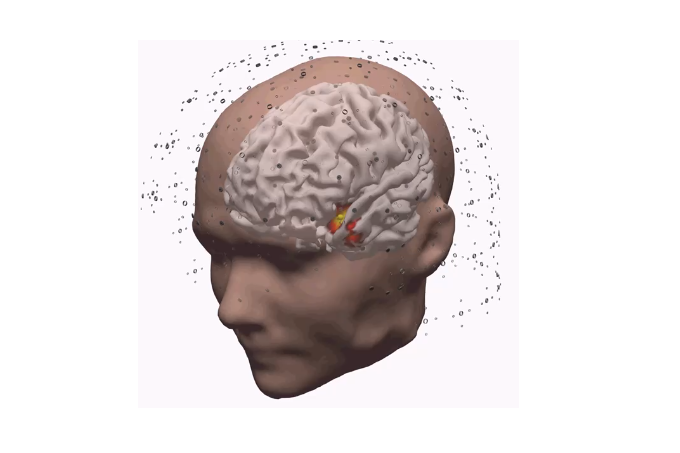The new non-invasive brain scan techniques giving seizure sufferers a new lease on life

Swinburne University of Technology’s cutting-edge non-invasive investigations for epilepsy are giving seizure sufferers a second chance at a happy and healthy life.
In summary
Stephenie Evans was told nothing could be done to address the cause of her daily seizures, until a revolutionary approach by Swinburne researchers transformed her life
The advanced technology-driven approach pinpoints problematic areas in the brain and avoids the risk of expensive and potentially dangerous invasive methods
Stephenie, who is available for interview, says the technique should give hope to 12,000 Australians diagnosed with epilepsy every year.
When Stephenie Evans suffered her first seizure in 2007, little did she know it was the start of a period where she was just “existing, not living”.
After becoming housebound with daily seizures, Stephenie was advised by her epilepsy specialist in Arizona, USA there was nothing more that could be done to help pinpoint which of the dozens of ‘cavernomas’ (abnormal blood vessel coils) in her brain were responsible for the seizures.
“The number of seizures I had completely impacted my quality of life and happiness. I didn't have a life anymore,” she says.
Thanks to Swinburne University of Technology’s cutting-edge non-invasive investigations for epilepsy, seizure sufferers like Stephenie Evans are being given a second chance at a happy and healthy life.

A technology-driven approach
Current invasive treatments techniques carry the risk of infection, bleeding and stroke, on top of a single depth electrode array that can cost over $1,000. Even then, it can be ineffective in identifying the culprit area in the brain.
Swinburne’s neuroimaging team is using 20 times more electrode sensors than standard hospital recordings. The high-resolution approach involves the use of combined high density electrical and magnetic field sampling with more than 400 sensor points across the head surface. This safe, non-invasive method more accurately pinpoints where the problematic abnormal brain waves are arising from.
Senior Neuroimaging Scientist and Swinburne Adjunct Research Fellow Simon Vogrin and Clinical Neurologist and Swinburne researcher Professor Chris Plummer worked with Stephenie after she got in an almost fatal car crash due to a seizure. Their study results were enough to convince the treating team that a particular cavernoma at the front of the brain should be removed.
“Patients with uncontrolled seizures are typically taking multiple types of medications that each carry side effects such as fatigue, drowsiness, dizziness, depression, and insomnia,” says Professor Plummer.
“Epilepsy surgery in cases like Stephenie remains vastly underused. One of the reasons is that it can be very difficult to pin-point the culprit regions in the brain that give rise to seizures using safe non-invasive tests. This is changing now with the advanced brain wave analysis techniques being employed at Swinburne. Surgery can literally transform lives.”
A new lease on life
More than two years have passed since the surgery was performed and Stephenie says the impact of the treatment has drastically improved her quality of life. “Without it, I would still be having seizures.”
Stephenie says Swinburne’s investigation has given her a life and hope for the future. She is able to drive, work, travel, and independently “do things everyone else takes for granted”.
“People need to know about this technique because in my case, it showed the one particular cavernoma causing my seizures, which was different than the standard hospital tests suggesting a different cavernoma.
“There is hope for people out there that think that there is nothing that can be done.”
-
Media Enquiries
Related articles
-

- Student News
- Science
- Sustainability
Introducing tomorrow’s global science communicators
Start Talking is Swinburne’s unique video-based public speaking competition, exclusively for undergraduate students
Monday 08 December 2025 -

- Astronomy
- Technology
- Health
- Science
- University
- Sustainability
- Engineering
Swinburne highly cited researchers reach the top in 12 fields
Ten Swinburne academics have been named on the Highly Cited Researchers 2025 list, released by Clarivate
Tuesday 02 December 2025 -

- Science
- Engineering
Swinburne secures grant to advance next-generation metamaterials research
Swinburne physicist Dr Weibai Li has received a Discovery Early Career Researcher Award from the Australian Research Council
Tuesday 02 December 2025 -

- Technology
- Health
- Science
- University
$1.2m ARC funding to boost national X-ray spectroscopy capability through Swinburne and QUT partnership
Swinburne has secured $1.2 million in the latest Australian Research Council Linkage Infrastructure, Equipment and Facilities scheme round
Tuesday 02 December 2025 -

- Astronomy
- Technology
- Science
- Engineering
Meet Swinburne’s Roo-ver Mission team
Roo-ver will be Australia's first lunar rover, and it’s being designed, built and tested in Australia. Swinburne is playing a key role in the design and construction of Roo-ver, through its involvement in the ELO2 Consortium.
Wednesday 26 November 2025

